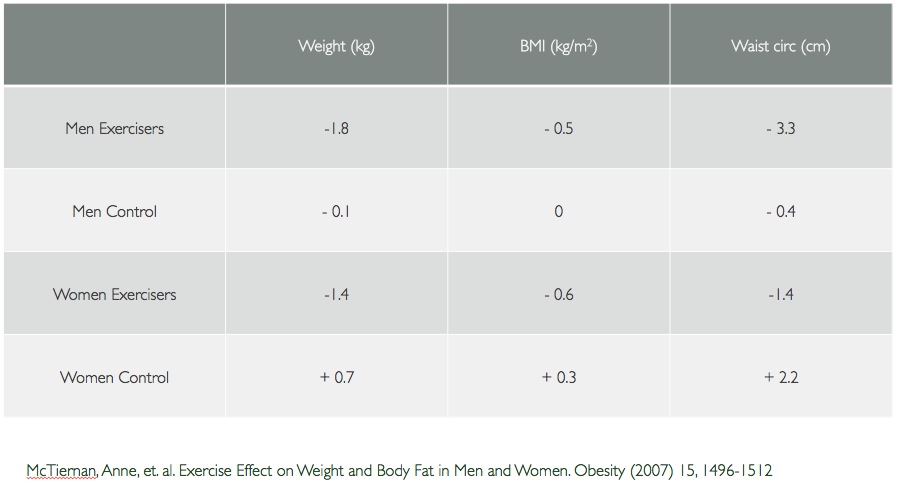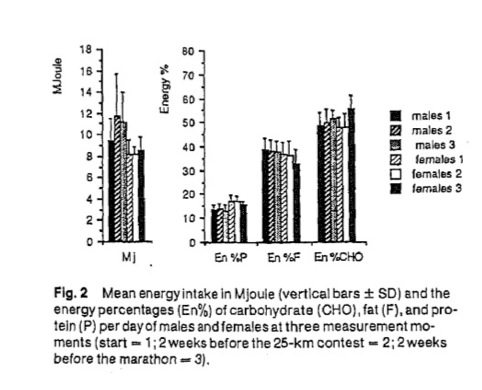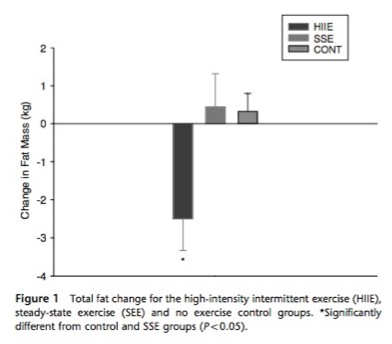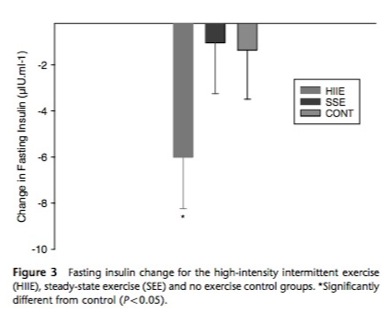Exercise Smarter, Less and with Better Success
Is your exercise regimen best suited for your health goals? If you are doing regular cardio and hope to lose body fat while preserving or increasing lean muscle it is not. We are now starting to understand that all of time on the road, the treadmill and the elliptical may be exactly why we don't lose weight. In fact, in may be causing to increase body fat! You heard me, your cardio regimen may be more detimental than helpful.
The Institute of Medicine (IOM) recommends that you get 60 minutes of daily moderate intensity physical activity and recommend that walking or jogging at 3-4 miles per hour is a good goal to aim for. So your chronic cardio regimen is making the IOM happy, but what about you?
In a study in 2007 in the journal Obesity, they followed 102 sedentary persons ages 40-75. Sedentary was defined as less than 90 minutes of activity per week. They put half of these 102 people through an exercise regimen that was defined as moderately vigorous. They performed 60 minutes of cardio per day 6 days a week for 12 months versus half of the group which was to perform no exercise. They were sure to not have any of the studied participants change their nutrition during this time. Seems like this would have a pretty big impact on overall health, no?
Here are the results after 12 months:

The men lost 1.8 kilograms (just shy of 4 pounds) and the women lost approximately 3 pounds. After 12 months of 6 days a week 60 minute cardio exercise! That's a heck of a lot of work for 3 pounds. Ouch. The study researches called this success. I call it a waste of time.
What about all of these marathons, mini-marathons, couch to 5K races that are designed to make this huge health impact? Isn't that a good thing? In 1989, a study was done to prove just that. 114 volunteers were selected to train for 18 months and complete a marathon. Along the way they ran in gradually longer races, going from 15K to 25K to 42.195K. During this time, 30 of these participants had their nutrition intake tracked.
Going couch to marathon should have been a pretty big success story, right? Well the authors of the study sum it up best:

Wow. 18 months of training, no change in body composition in the women and no statistically significant change in men.
What's happening?
When you run, your muscles are actually challenged very little. What does happen is in order to make it any distance, the muscles must burn up their sugar stores known as glycogen. The muscles are on auto-pilot, so there is no need to get stronger, no need to increase the hormones of building lean mass like growth hormone. What does need to happen though, is that you have to replace the lost glycogen, so you crave sugar. This was proven in the marathon study, take a look at nutritional intake:

The 1, 2 and 3 represent the nutrition assessments that were done throughout the study. By comparing the first 3 bars in each graph you can see the trends in men, and women in the second set of 3 bars. On the left you can see that calorie intake did go up, but not dramatically, particularly in the women. What you can see is what type of calories changed. The trends for protein and fats show that consumption decreases. Carbs? Increases across the board. Matter of fact, look at the very last two bars on the right. The women dramatically increase their carbohydrate intake. Fat storage anyone?
Not only is the knock on chronic cardio its near singular effect of increasing carbohyrate demand, but chronic runners and those training for long distance events generally do not allow for appropriate recovery. The 60 minutes a day spent on the elliptical is stressful, and over time takes its toll on the adrenals. This would be another reason for carb cravings and fat storage.
So if chronic cardio is out, what are we to do with the fancy new shoes and matching outfits along with the new Lycra calf sleeves? Make the muscles work and make them work hard. Pushing your muscles beyond a point they are comfortable with and previously didn't think they were capable of will force them to send a signal to your body and hormonal system to improve. The result? Better insulin sensitivity, better use of glucose (and if your pie chart is right it will need to come from body fat stores) and better levels of human growth hormone.
Lift heavy things and sprint.
What about the evidence for this? A study from 2008, in the International Journal of Obesity took 34 previously inactive women aged 18 to mid-30s. They divided them up into 3 groups and studied them for 15 weeks:
- 20 minutes of high intensity intermittent exercise. Sprint for 8 seconds, rest for 12 seconds. Three times a week.
- 40 minutes of steady state cardio at 60% of max effort. Three times a week.
- Nothing
Keep in mind the high intensity group worked out for HALF the time as the cardio group did.
Here's body composition along with insulin level results (remember, only 15 weeks long):


The high intensity group lost a significant amount of fat mass compared to the other two groups that increased their fat mass! Their central abdominal fat, the stuff we are all more heavily worried about both for bathing suit and health reasons, dropped 9.5% in the high intensity exercises while it INCREASED 10.5% in the cardio exercisers. The insulin results are phenomenal as well. All from exercising LESS, just harder.
Bottom line: Get off the road, treadmill and elliptical. At least in the 45-60 minute at a moderate to heavy pace format. Get sprinting.
There are thousands of ways to do high intensity sprinting in a variety for formats. I've used my driveway, a recumbent bike at the gym, a kayak and Concept 2 rowing machine. It's all good. My personal favorite? Tabata sprints. 4 minutes. It's 4 minutes of hell, but it's only 4 minutes.
Click the link to learn about Tabata sprints.
comments powered by Disqus
